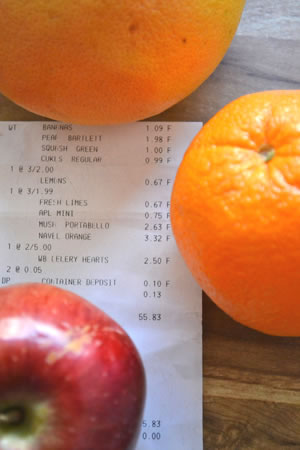And so another excuse for eating an unhealthy diet has been snatched from the ifs-ands-buts arsenal. A recent study found that more nutritious foods, in general, do not cost more than less nutritious ones
Health Don’t Cost a Thing (Sorta) — Analysis
 The study took foods from six supermarkets in one Missouri county and categorized them based on nutrition, weight management, and an item-to-item cost comparison. Researchers found that the average price of more nutritious items was not significantly higher than that of the less nutritious foods on the whole, but it did vary based on the food type
The study took foods from six supermarkets in one Missouri county and categorized them based on nutrition, weight management, and an item-to-item cost comparison. Researchers found that the average price of more nutritious items was not significantly higher than that of the less nutritious foods on the whole, but it did vary based on the food type
But there’s a catch: just because the foods in the study show that more nutritious foods did not vary more in cost from the less nutritious ones doesn’t mean that will hold true at any American grocery store. Because the study was done in such a small, localized area, the data cannot be deemed applicable to the country as a whole. Presumably, New York City would have less forgiving prices than those of a Missourian county. So, before assuming that picking more nutritious choices won’t rack up the grocery bill overall, do a little research. By perusing prices from a few local supermarkets and farms, cost comparing and ultimately finding the best deal, there is no reason why eating healthier shouldn’t be affordable.
Updated August, 2011
Experts’ Take
“This study has one key finding: that less nutritious cereal was significantly more expensive than more nutritous cereal. The downside is that they only compared a few foods (mostly grains). For bread, cereal bars, crakers, juices, and peanut butter, the more nutritious item was in fact more expensive (although not always significantly more). Nonetheless, the take-away message is that healthy food can be affordable! To find cheaper nutritious foods, look at the local farmers’ market or consider clipping coupons.”
“This study was quite narrow in scope, focusing mostly on highly processed and carbohydrate-rich foods, so it doesn’t address the global costs of a healthy diet that might include meats, eggs, fish, vegetables, healthy fats, or fruit. Numerous studies have shown that the more nutritious versions of proteins and omega-3 fats, as well as and all the vitamins and minerals we need so much, are all FAR cheaper in the more nutritious form: raw and real farm-fresh produce and lean meats. Eating a healthy diet, balanced, and rich in nutrients is very affordable, never mind the positive health impact!”
TL;DR
A new study suggests that, contrary to popular belief, healthy foods don’t have to break the bank. Of course, it still depends on the food (and location of purchase).
